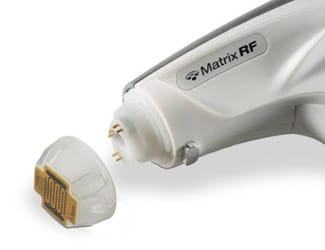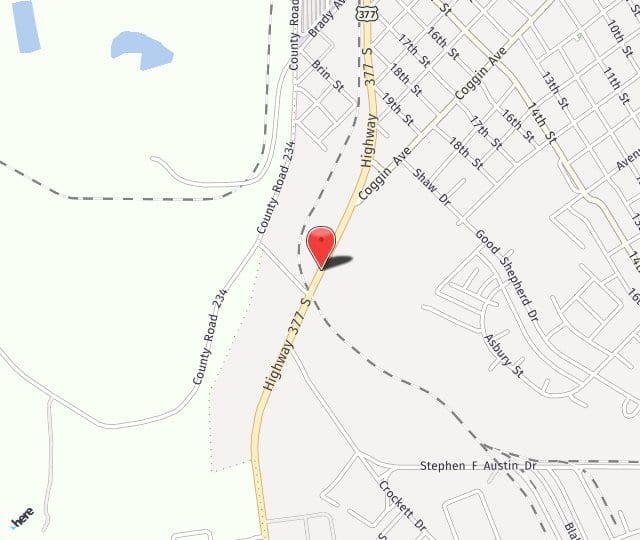Sub-Ablative Laser Therapy in Brownwood, TX

The latest in ablative laser technologies is the introduction and advent of new sub-ablative technologies using RF (Radio Frequency) to selective ablate tissue leaving surrounding tissue undamaged and accelerating the healing process. Do not confuse this type of radiofrequency device with others used for skin tightening as the light energies are specifically focused for sub-ablation of tissue.
Fractional sub-ablative treatments use both a 915nm diode matrix array in conjunction with radiofrequency to create strong thermal bands that penetrate in the deep dermis with minimal side effects for the epidermis. This allows the dermal layer of skin to be ablated while preserving the epidermis – all of which means no or minimal downtime to the patient. Only a small portion of the skin is ablated at one time, typically only 5-10% of the skin treated during each treatment, the total amount of skin that can ablated within a year is 30%. This partial ablation is achieved by taking the CO2 gas light energy and fractionate it by have a single pulse be broken into hundreds of small arrays of heat energies that coagulate and evaporate the skin in a very controlled manner.
The benefits to the skin are two-fold; the heat conducted to the collagen fibers of the skin causes collagen contraction (tightening) as well as collagen remodeling (new collagen production), and the overall heating of the skin layers again cause new collagen synethesis for over (1) year. Variability of settings allow for epidermal evaporisation of skin results include clearing of vascular lesions, pigmented lesions, and scars, all of these results are visible upon re-epithilialisation of the skin (< 30 days). The dermal inflammation caused by the sub-ablative procedures release mediators for collagen, stimulates new collagen production (1 week) and neo-collagen production for over (1) year. By producing additional collagen and eliminating vascular and pigmented lesions as well as recontouring scars this is a total comprehensive treatment to the face.
Anesthesia may or may not be required prior to the treatments but are topical for patient comfort. Downtime after the procedure is minimal and only inflamation and swelling of treated areas are expected but can vary based upon the patient and the aggressiveness of the treatment performed. Simple post-procedure instructions allow for complete repair and results continue for up to (1) year after the treatment(s). Turn back time and create a healthy new appearance to your skin.
Additional real benefits of these procedures include improvement to skin tonicity (tightening) and in the reduction of lines and wrinkles due to the new thickened bands of collagen created through the treatments. Where non-ablative lasers require numerous treatments and the results can be marginal many individuals are taking advantage of these more aggressive and dramatic results achieved by new sub-ablative technologies – Call us today to see for yourself the difference we can achieve for you and join the hundreds of happy patients in Brownwood, Abilene, Brady, Llano, San Angelo and other surrounding areas.
How is Sub-Ablative Laser Treatment Different from Other Laser Treatments?
All laser treatments affect the skin through precise wavelengths of light. These rays of light produce controlled injuries with the intent of promoting cellular turnover and more robust collagen production. Historically, laser treatments have fallen into one of two categories. They were either ablative or nonablative.
Ablative lasers affect the uppermost layer of the skin. During this type of treatment, the laser energy obliterates the top layer of skin cells. While the technique can achieve remarkable results, correcting signs of sun damage, aging, and scarring, most people prefer a more conservative approach. Ablative lasers carry the most risk of any laser treatment due to the removal of a layer of tissue. They may incur side effects that last up to a few weeks.
Nonablative lasers use sophisticated technology to affect the deeper layers of the skin. Here, laser energy is absorbed in the area where sun damage and aging originate. The warming of deeper tissues instigates profound collagen production and repair processes without significant side effects or downtime.
In recent years, laser treatments have been improved upon through the use of fractional technology. This takes the single beam of the laser device and breaks it down into many, pinpoint dots. So instead of affecting 100 percent of the target area, the fractional laser treatment creates hundreds of micro injuries. The presence of healthy tissue in between strengthens the remodeling process while simultaneously diminishing post-treatment side effects like redness, swelling, and discomfort.
Fractional laser treatments produce thousands of tiny columns or micro-beams of energy creating areas of treated tissue surrounded by untreated tissue. This mimics the results obtained with the more aggressive carbon dioxide ablative procedures but without the risks and prolonged healing time.
Sub-Ablative laser treatment is different in that it works through the use of fractionated bi-polar radiofrequency, not laser energy. Being sub-ablative, this procedure permeates the deeper layers of tissue, leaving the epidermis intact. In this way, it’s similar to non-ablative laser treatment. The use of radiofrequency energy delivered sub-dermally widens the capacity of this technology to treat a broader range of skin types and tones, something that tends to be limited with traditional laser treatments. The gentle energy currents work effectively with minimal downtime.
Is There Any Downtime after Sub-Ablative Laser Treatment?
You can expect to need some time out of the limelight after your Sub-ablative laser treatment. Unlike fully ablative laser treatments, our procedure doesn’t involve months of significant redness, swelling, and oozing. While there may be some variances between patients, we usually anticipate the recovery from sub-ablative treatments to last no longer than two weeks. During the first week, as cellular turnover begins, you may notice that your skin feels rough and looks a little flaky or textured. We advise against wearing makeup during this time (it will slough off anyway) to promote optimal recovery. After about five to seven days, your skin should begin to look smoother and more radiant as the healthy new cells replace those that have sloughed off. The full results of your sub-ablative treatment continue to build for up to six months.


